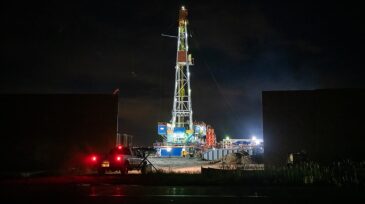Environment
Buoy-based camera footage, analyzed by artificial intelligence, can help reduce the risk of birds colliding with offshore wind farm turbines.
The Dutch marine contractor says it plans to outfit its construction vessels with small modular reactors over 5 years.
The urgency of methane emissions reduction in the oil and gas sector demands a strategic approach to change management. Success hinges on fostering a shift in industry mindset, where emissions reduction is embedded into operational design and decision-making rather than seen as a regulatory burden.
-
The company’s first report on global emissions shows that, while the US emits the most, Canada has the highest emission intensity and Norway has the lowest.
-
A US judge in Montana has thrown out a Trump administration directive that weakened an Obama-era policy aimed at protecting the threatened bird, invalidating hundreds of oil and gas leases on federal land in Montana and Wyoming.
-
Senior oil and gas professionals see hydrogen as a significant part of the global energy mix by 2030.
-
The Alberta Energy Regulator has suspended a wide array of environmental monitoring requirements for oilsands companies over public health concerns raised by the COVID-19 pandemic.
-
The number of temporarily abandoned oil and gas wells is up 37% from last year, but Colorado regulators say they still have the time—and money—to inspect them.
-
After years of negotiations, the province announced that it had reached a preliminary agreement with the federal government that it calls a “major step toward providing Alberta’s oil and gas industry a single set of strong rules to reduce methane emissions and protect the environment.”
-
Video shows a substantial share of oil and gas flares are unlit or faulty, revealing a previously overlooked methane source that could turn out to be one of the region’s biggest.
-
US energy-related carbon dioxide emissions declined by 2.8% in 2019 to 5,130 million metric tons, according to data in the US Energy Information Administration’s Monthly Energy Review. Carbon dioxide emissions had increased by 2.9% in 2018, the only annual increase in the past 5 years.
-
The French oil and gas major announced that it plans to achieve net-zero emissions by 2050 for its global business across production and including energy products used by its customers.
-
A 3-year study of air quality, soils, groundwater, and waterways found few to no effects as a result of hydraulic fracturing operations in Surat Basin coal seam formations.













